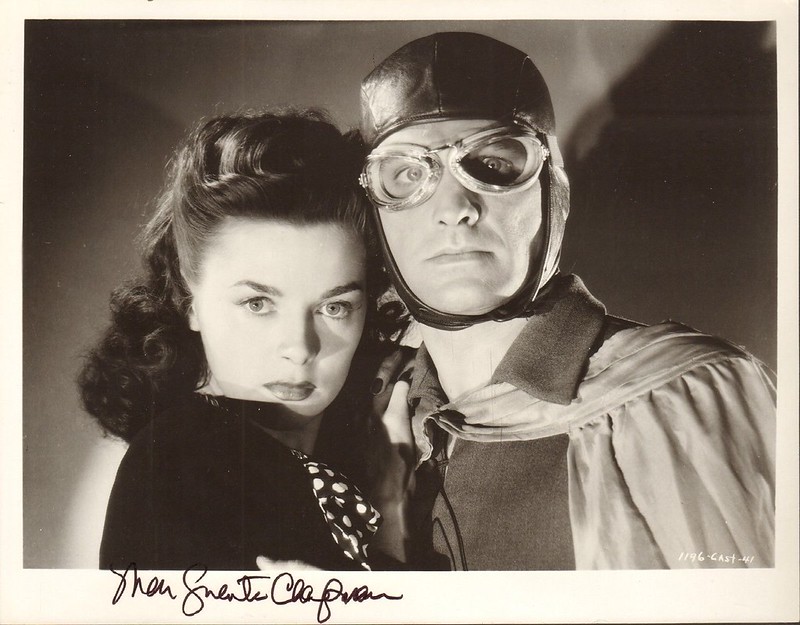I used to program movie serials and played three of the very best at the LaSalle Bank Theatre in Chicago: Flash Gordon’s Trip to Mars (1938), Dick Tracy’s G-Men (1939) and Spy Smasher (1942)– the latter being my choice for the greatest serial of them all. These films were screened in the 16mm format back then.
The following are a couple unpublished responses to questions that were asked of me by serial fans…
Why didn’t Republic produce a sequel to Spy Smasher? Probably because they simply didn’t think to do so. Their production schedules were a full year away from actual film-making and they wanted variety in the subject matter. Spy Smasher was very much a product of its time and if they thought of a sequel by late ’43 or sometime in ’44, studio heads were already shy of war themes with peace or victory on the horizon. That’s why the late entry Captain America (1944) had a conventional ‘crook’ plot instead of a war background– they didn’t want the last of those 15 chapters spread into a non-war period.
Marguerite Chapman and Kane Richmond, Spy Smasher (1942)
Why did the serials die out in the ’50s? It was mainly the advent of television. Serials were a tradition of movie-going since the earliest times, as main attractions. But by the sound era, they were relegated to Saturday afternoon kiddie matinees. When TV instantly started making headway in ’49, the hand-writing was on the wall. Kids could stay home in front of the tube to see The Lone Ranger or The Cisco Kid. Also, raising production costs were making this ‘marginal’ box office material unpractical. Someone– probably director William Witney– said a popular serial in the early ’40s could finance three Roy Rogers movies alone.
I can tell you for a fact that the only reason Columbia and Universal made serials was because Republic did– and did so profitably. The fact they did them expertly wasn’t a decisive factor to Columbia or Universal; just grind ’em out and fill the theatres year ’round. Columbia had the great pulp or comic characters but didn’t give a damn about treating the product with care– what does a kid know or care as long as Batman is jumping around the set. An exception was 1938’s The Spider’s Web— one of the worthwhile Columbia cliffhangers. It really captures the murderous flavor of its pulp magazine origins, at least in the first half– guns a-blazin’, bodies dropping everywhere!
And one take only with Columbia, even if Batman’s cape were to fall off in a fight scene. Unfortunately, all of the Columbia scripts were pretty interchangeable and distinguished only by the hero’s costume. The screenwriters really played down to the audience and the action was hardly choreographed along the lines of a Republic.
Universal at least made an effort to better the writing if not the logic but were buried under all that stock and newsreel footage. Columbia’s, especially under Sam Katzman, were just plain dumb. To add insult to injury and hurry the demise of cliffhangers in theatres, the studios in infinite wisdom sold their old chapters to TV– the enemy! By the early ’50s, even those cut-down running times and economy scripts were costing the earth compared to the early ’40s standards. Goodbye serials, Westerns and all B product; Hello “A” treatment, expensive stars, 3-D and CinemaScope.
~MCH